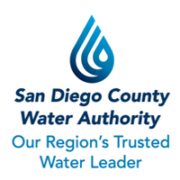Aug. 16, 2022 – Sandra L. Kerl, general manager of the San Diego County Water Authority, issued the following statement in response to the U.S. Bureau of Reclamation’s 24-month projection for water levels in Lake Mead and Lake Powell.
“Today’s announcement by the Bureau of Reclamation is a reminder of just how important it is to increase water conservation across San Diego County and the rest of the arid West. An increasingly hot and dry climate is creating unprecedented challenges for water supplies that will impact life in the Southwest for the foreseeable future.
“The San Diego County Water Authority continues to participate in discussions about the future of the Colorado River. We also continue to highlight the value of the conserved water transfer agreement between the Water Authority and the Imperial Irrigation District, the cornerstone of the landmark Quantification Settlement Agreement, or QSA, negotiated in 2003, as well as our investments in concrete lining sections of the All-American and Coachella Canals to conserve water previously lost to seepage. Through the QSA, the Water Authority funds critical conservation efforts in the Imperial Valley that provide the San Diego County region 277,700 acre-feet of highly reliable, cost-effective conserved water supplies each year. Further, the QSA enables California to live within its historic 4.4-million-acre-foot annual Colorado River apportionment while providing a roadmap for current efforts to balance the complex economic, agriculture, environmental, most notably the Salton Sea, and water-use needs in the Colorado River Basin.
“The Water Authority has not been asked to make any voluntary reductions to Colorado River water supplied by IID under Reclamation’s call for additional basin-wide conservation. If cuts were deemed mandatory to IID through an official Secretarial declared shortage to Priority 3 water in California, the Water Authority would take a pro-rata reduction of its IID transfer supplies.
“Investments by San Diego County residents in other water sources and storage facilities will continue to shield the region from the worst effects of the drought. At the same time, the potential for mandated water-use reductions should inspire every San Diegan to decrease their water use, for instance, by taking shorter showers, reducing irrigation of decorative grass, and upgrading to efficient appliances.”
— Sandra L. Kerl, General Manager, San Diego County Water Authority



